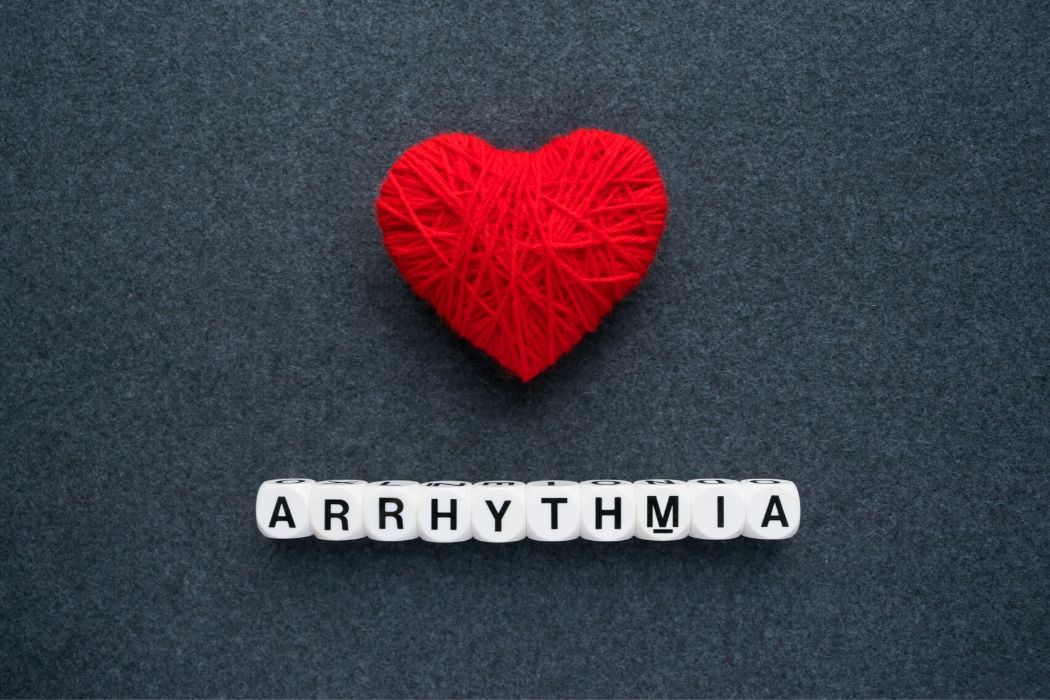Arrhythmia is a disorder or alteration in the heart rate (pulse) or heart rhythm. The heart may beat too fast (tachycardia), too slow (bradycardia), or irregularly. Arrythmia may be harmless, it might be a sign of other heart problems, or it could be an immediate danger to health.
What is a normal heartbeat like?
Heart rate measures the number of times per minute that the heart contracts or beats, and is an important indicator of health in the human body. Likewise, normal heart rate is a useful reference for identifying different health problems or diseases, although it does not guarantee that a person is totally healthy.
In adults, normal heart at rest should be between 60 and 100 beats per minute at rest.
Types of arrhythmia
To establish suitable treatment, it is crucial to correctly diagnose the type of arrhythmia that the patient has, as there are different types of risk and treatment methods.
Classification of arrhythmia:
- According to the speed of the heart rate: bradycardia and tachycardia.
- According to the origin: supraventricular and ventricular arrhythmia.
We distinguish the different types of arrhythmia according to the speed of the heart rate below:
Slow heart beat: bradycardia
A slow heart beat is considered to be a cardiac rate of less than 60 beats per minute at rest. Nevertheless, a low heart rate at rest is not always a symptom of a health problem. For example, it is normal for the heart rate to be slower than usual when sleeping or in moments of deep relaxation.
Bradycardia can cause loss of consciousness, fainting, tiredness or difficulty breathing, as the brain does not receive enough oxygen.
Fast heart beat: tachycardia
Tachycardia is a fast heartbeat. This means a heartbeat of more than 100 beats per minute at rest. Tachycardia may include:
- Supraventricular tachycardia (SVT)
- Inappropriate sinus tachycardia
- Atrial flutter
- Atrial fibrillation (AF)
- Ventricular tachycardia (VT)
- Ventricular fibrillation (VF)
This increase in the heart rate means that the heart cannot correctly pump the blood, which can therefore not take enough oxygen to the rest of the body. Tachycardia can cause chest pains; a very fast, uncomfortable or irregular heartbeat; a state of confusion and a fast pulse. Nevertheless, palpitations do not always indicate a pathology, nor do they mean that there is tachycardia.
We distinguish the different types of arrhythmia according to their origin below:
Supraventricular arrhythmia
This originates in the upper heart chambers. In some cases, it may cause tiredness, embolisms and problems related to cerebral ictus.
This kind of arrhythmia has to be treated using heart rate controllers, so that the heart does not work faster than normal. Anticoagulants can prevent the formation of clots in the upper chambers, which could lead to a cerebral embolism.
People who often experience atrial fibrillation or atrial flutter should be treated with an anticoagulant (such as aspirin or sintrom), depending on the type of arrhythmia and age, as well as other risk factors.
Ventricular arrythmia
Ventricular arrhythmia or tachycardia stems from the lower heart chambers, and means that the cardiac muscle cannot pump blood efficiently. The person may lose consciousness, or experience sudden cardiac death.
Due to the risk of sudden death, this type of arrhythmia should be treated with antiarrhythmics, or an automatic defibrillator should be fitted.
Symptoms of cardiac arrhythmia
The most common symptoms that occur when a patient has arrhythmia include:
- Chest pain.
- Loss of consciousness (fainting, dizziness and vertigo).
- Paleness.
- Palpitations.
- Difficulty breathing.
- Sweating.
Causes of cardiac arrhythmia
Cardiac arrhythmia occurs when there are changes to the cardiac rhythm, the heart’s electric system. This system can fail for various reasons:
- Abnormal levels of potassium or other substances in the body.
- Heart attack or damage to the myocardium due to a previous heart attack.
- Heart disease that was present from birth (congenital).
- Cardiac insufficiency or enlargement of the heart.
- Hyperthyroidism.
Prevention of cardiac arrhythmia
To prevent or reduce the formation of cardiac arrhythmia, patients may consider the following measures:
- Reducing the consumption of sugar and fat to reduce high cholesterol and diabetes.
- Doing regular sport.
- Not smoking.
- Consuming alcohol, tea and coffee in moderation.
- Managing and reducing stress levels.






